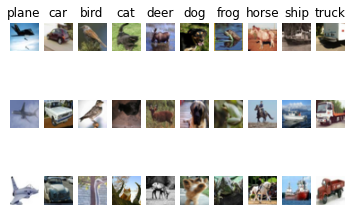Batch Normalization vs Dropout Ordering: Which First?
Learn the optimal order for applying batch normalization and dropout layers in your neural networks to maximize performance and achieve faster convergence.
Learn the optimal order for applying batch normalization and dropout layers in your neural networks to maximize performance and achieve faster convergence.
When constructing neural networks, the order of layers significantly impacts performance. A common point of consideration is the placement of Batch Normalization (BatchNorm) and Dropout layers relative to convolutional/fully connected layers and activation functions. While variations exist, a widely accepted order has emerged as a best practice.
The general consensus for ordering Batch Normalization (BatchNorm) and Dropout layers within a neural network is:
CONV/FC -> BatchNorm -> Activation -> Dropout
Let's break down why:
CONV/FC: This represents your convolutional or fully connected layer, the core building block for feature extraction.
x = Conv2D(64, (3, 3), activation='relu')(x) BatchNorm: Applied directly after the convolutional or fully connected layer, BatchNorm normalizes the activations, stabilizing training and often allowing for faster learning rates.
x = BatchNormalization()(x)Activation: The activation function (like ReLU) introduces non-linearity, crucial for the network to learn complex patterns. It's generally placed after BatchNorm to operate on the normalized values.
x = Activation('relu')(x)Dropout: A regularization technique, Dropout randomly deactivates neurons during training, preventing overfitting. It's typically applied after the activation function.
x = Dropout(0.2)(x)Key Points:
This Python code defines a convolutional neural network (CNN) using TensorFlow and Keras. The model consists of two convolutional blocks, each with convolutional, batch normalization, activation, and dropout layers. It then flattens the output and passes it through a fully connected block with similar layers. Finally, it uses a dense layer with softmax activation for a 10-class classification task. The code compiles the model with the Adam optimizer, sparse categorical cross-entropy loss, and accuracy metric. It also prints a summary of the model architecture.
from tensorflow import keras
from tensorflow.keras import layers
# Define input shape
input_shape = (28, 28, 1) # Example: MNIST image shape
# Create a sequential model
model = keras.Sequential()
# Convolutional block
model.add(layers.Conv2D(32, (3, 3), input_shape=input_shape))
model.add(layers.BatchNormalization())
model.add(layers.Activation('relu'))
model.add(layers.Dropout(0.25))
# Another convolutional block (optional)
model.add(layers.Conv2D(64, (3, 3)))
model.add(layers.BatchNormalization())
model.add(layers.Activation('relu'))
model.add(layers.MaxPooling2D((2, 2)))
model.add(layers.Dropout(0.25))
# Flatten for fully connected layers
model.add(layers.Flatten())
# Fully connected block
model.add(layers.Dense(128))
model.add(layers.BatchNormalization())
model.add(layers.Activation('relu'))
model.add(layers.Dropout(0.5))
# Output layer
model.add(layers.Dense(10, activation='softmax')) # Example: 10 classes
# Compile the model (add optimizer, loss, metrics)
model.compile(optimizer='adam',
loss='sparse_categorical_crossentropy',
metrics=['accuracy'])
# Print model summary
model.summary()Explanation:
Conv2D -> BatchNorm -> Activation -> Dropout pattern.Important:
Impact on Internal Covariance Shift: BatchNorm primarily combats internal covariate shift by normalizing activations. Placing it before the activation ensures the normalization happens on the raw outputs of the convolutional/fully connected layer, directly addressing the shift.
Dropout's Effect on Batch Statistics: Dropout randomly disables neurons, which can interfere with the stability of batch statistics calculated during training. Applying Dropout after BatchNorm allows BatchNorm to operate on more stable, representative statistics.
Regularization Strength: Applying Dropout after the activation function generally leads to stronger regularization. This is because the activation function can amplify the effect of dropping out neurons, leading to a more diverse set of learned features.
Alternative Ordering (BatchNorm after Activation): While less common, placing BatchNorm after the activation function can be beneficial in some cases. This might help in situations where the activation function introduces significant changes to the distribution of activations, and normalizing after these changes proves more effective.
Computational Efficiency: The standard ordering (BatchNorm before activation) is generally computationally more efficient as it avoids redundant calculations that might arise from normalizing already-activated values.
Consider the Activation Function: The choice of activation function can influence the optimal placement of BatchNorm. For example, ReLU's linear operation in the positive range might make the impact of BatchNorm's placement less pronounced compared to activations like sigmoid or tanh.
No One-Size-Fits-All: The ideal ordering is not set in stone and can vary depending on the specific dataset, architecture, and task. Empirical evaluation through experimentation is crucial to determine the best approach for your particular use case.
| Layer Type | Description | Placement Rationale |
|---|---|---|
| CONV/FC | Convolutional or Fully Connected layer for feature extraction. | First: Forms the base layer. |
| BatchNorm | Normalizes activations for stable and faster training. | Second (usually): Applied to the output of CONV/FC before non-linearity. |
| Activation | Introduces non-linearity (e.g., ReLU) for learning complex patterns. | Third: Operates on normalized values from BatchNorm. |
| Dropout | Randomly deactivates neurons during training to prevent overfitting. | Fourth: Applied after activation to regularize learned features. |
Key Takeaways:
In conclusion, the strategic placement of BatchNorm and Dropout layers in neural networks is crucial for optimizing their performance. While the conventional "CONV/FC -> BatchNorm -> Activation -> Dropout" order proves effective in most scenarios, understanding the nuances of their interactions, the impact of activation functions, and the specific demands of your dataset is paramount. Experimentation remains key to unlocking the full potential of your network architecture and achieving optimal results for your specific machine learning task.
 Order of layers in model - Part 1 (2017) - fast.ai Course Forums | In general when I am creating a model, what should be the order in which Convolution Layer, Batch Normalization, Max Pooling and Dropout occur? Is the following order correct - x = Convolution1D(64, 5, activation='relu')(inp) x = MaxPooling1D()(x) x = Dropout(0.2)(x) x = BatchNormalization()(x) In some places I read that Batch Norm should be put after convolution but before Activation. Even ResNet has similar structure. Something like this - x = Convolution1D(64, 5)(x) x = BatchNormalization...
Order of layers in model - Part 1 (2017) - fast.ai Course Forums | In general when I am creating a model, what should be the order in which Convolution Layer, Batch Normalization, Max Pooling and Dropout occur? Is the following order correct - x = Convolution1D(64, 5, activation='relu')(inp) x = MaxPooling1D()(x) x = Dropout(0.2)(x) x = BatchNormalization()(x) In some places I read that Batch Norm should be put after convolution but before Activation. Even ResNet has similar structure. Something like this - x = Convolution1D(64, 5)(x) x = BatchNormalization... Where should I place the batch normalization layer(s)? - Deep ... | Where should I place the BatchNorm layer, to train a great performance model? (like CNN or RNN)😳😳 Between each layer?🤔 Just before or after the activation function layer?🤔 Should before or after the activation function layer?🤔 How about the convolution layer and pooling layer?🤔 And where I shouldn’t place the BatchNorm layer?
Where should I place the batch normalization layer(s)? - Deep ... | Where should I place the BatchNorm layer, to train a great performance model? (like CNN or RNN)😳😳 Between each layer?🤔 Just before or after the activation function layer?🤔 Should before or after the activation function layer?🤔 How about the convolution layer and pooling layer?🤔 And where I shouldn’t place the BatchNorm layer? Demystifying Batch Normalization vs Drop out | by SeongKyung Kim ... | Is batch normalization really the rule of thumb? Comparing the result with dropout on the CIFAR10 dataset
Demystifying Batch Normalization vs Drop out | by SeongKyung Kim ... | Is batch normalization really the rule of thumb? Comparing the result with dropout on the CIFAR10 dataset Batch Norm/Drop out ordering - Improving Deep Neural Networks ... | Hi there, I have been reading a debate about the ordering of BN and dropout in hidden layers. As an example below using keras: As you can see, I have BN just after the input layer but befor activation function then dropout after? I have noticed performance differences when i change the order and cannot see much of a consensus online
Batch Norm/Drop out ordering - Improving Deep Neural Networks ... | Hi there, I have been reading a debate about the ordering of BN and dropout in hidden layers. As an example below using keras: As you can see, I have BN just after the input layer but befor activation function then dropout after? I have noticed performance differences when i change the order and cannot see much of a consensus online